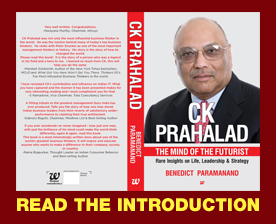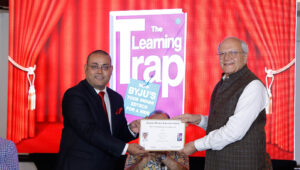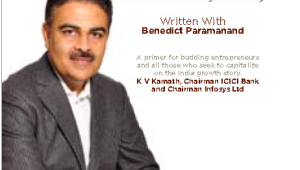 Ramesh Jude Thomas is the President &CKO of EQUiTOR Value AdvisoryPvt. Ltdwhich has unlocked in excess of $3.5 Billion of value from Brand Assets alone, over the last 12 years.
Ramesh Jude Thomas is the President &CKO of EQUiTOR Value AdvisoryPvt. Ltdwhich has unlocked in excess of $3.5 Billion of value from Brand Assets alone, over the last 12 years.
I was meeting Reena after many years. She had been a banker in the Western Hemisphere for a couple of decades. After dinner, she revealed that she too was now in the business of Transformation- Transforming the future of the girl child through education.
I was immediately excited about how the EQUiTOR Foundation could help. But the look of skepticism on her face was telling: “What can a professional Brand Valuation firm to do to help poor girls get a good education?”
This narrow definition of the brands as real assets is unfortunately the norm in India. But the blame for this blinkered view must rest squarely on the shoulders of people like me. While we spend a lot of time talking about our commercially successful cases, the EQUiTOR Foundation has never exposed people to the transformational role that brands can play in the growth and stability of non-profits.
The twin problems that most non-profits face are common and endemic:
– Predictable inflows
– Stable skill base.
And it does not really matter what size they are.
Non-profit need not be short of funds
From our experience we can state with complete confidence that no Non-Profit needs to ever be short of funds or skills.
So then why are these problems endemic? This is fundamentally because both resources are dependent on tactical, crisis based approaches e.g. “this initiative needs a large amount of funding” or “how quickly can we find people for that activity”. So what donors and volunteers are really buying into is a transactional request for support.
One year into the birth of the EQUiTOR Foundation we discovered a metaphor that helped us clarify the brand perspective for non-profits. We got all of them to move from a ‘Cover Story’ model to a ‘Subscription model’. So, as a donor (of money or talent), I subscribe to the non-profit’s raison d’etre rather than to a single initiative or a crisis.
How did this help? Essentially it moved the funding motivation from short term to long term. Publications that enjoy subscription readership are dramatically de-risked at both ends. Similarly, a donor who fundamentally believes in the entity is a far more dependable patron than someone who funds an activity or a crisis.
Now, brand valuation (or any valuation for that matter), is about managing the risk of future earnings. If a brand (commercial or non-profit) does not have an articulate rationale for existence and therefore why customers are loyal to it, then it cannot know the risk of its forecast earnings.
What drives customer commitment in business is the same as what drives donations (and volunteering) for non-profits. We all buy into a brand before we actually buy the brand!
What do you think?











Recent Comments